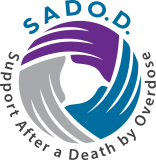
SADOD Expands Outreach to Spanish-Speaking Communities
By Luke Schmaltz, VOICES Newsletter Editor
Laura Vargas, MSW, LCSW, serves as SADOD’s Director of Outreach Programs. She is Colombian born, and native Spanish speaker with extensive experience in community outreach.
“My parents, siblings, and I moved to the U.S. when I was two years old, so I feel like I have always straddled both cultures,” she says. “Something that has always been important to me is to bridge the two communities. I find privilege in being able to work with both and learn from each one.”
Vargas recently completed a site-wide Spanish-language upgrade of the sadod.org website.
“Across the board, there are very limited resources in Spanish,” Vargas explains, “Especially those that are focused on grief due to substance use. As long as I have been in this space I have been researching, and I have found there is not much out there.”
“When I joined this team, one of my goals was to make SADOD’s resources as comprehensive as possible by including Spanish language. I did a whole bunch of research to find what resources are out there and to connect them accordingly with SADOD.”
Comprehensive Translation
“For the in-house materials as well as all of the pages, I went ahead and translated those myself. Many of the pages link to articles and videos, and to the extent that I could, I linked these new pages to what Spanish-language resources I could find.”
“We are super excited to be able to offer a website that has almost everything offered in English presented in Spanish as well. As for support groups and grief groups, it is much more limited.” Regardless, Vargas was able to locate and list in-person and online grief groups, both in the Boston area and in other regions, designed for Spanish-speaking attendees.
“Is it enough? Absolutely not. In an ideal world, there would be as many groups to choose from for Spanish speakers as there are for English speakers, but it’s a good start in the right direction. Now, we have resources to offer, the booklet, and the wallet cards so we can start to bring people in, and they will see that this is a community that supports them, not one that is a closed door because the resources are only in English.
As we form and grow the Spanish-speaking part of our outreach, we can work toward making this a community-informed approach, whereby we learn from these individuals, what they are looking for, and what services would be most helpful. Then, we can work towards launching these supports. The most important thing is to make sure it is community-informed, rather than just starting services that may not be what the community is looking for. We should always work to engage with and meet people where they are at through a lens of cultural humility,” she says.
A Suite of Language-Appropriate Services
This enhancement allows members of the Latinx community who are bereaved from a substance use-related death to find support for coping with grief. In many instances, members of underserved communities face barriers to grief support services due to a lack of Spanish-language content.
Thanks to Vargas’ initiative, Spanish-speaking website visitors can now request a free grief booklet and learn more about the organization and founders of SADOD.
New Spanish-language features also include information on helping people grieving the death of a loved one, grieving children, people in or seeking recovery, and a calendar of upcoming events.
SADOD’s Honoring the Many website is also available in Spanish, under the name Recordando con Amor, which means “Remembering with Love”. This allows anyone grieving the death of a loved one to substance-use related causes to commemorate their loved one with an online memorial.
If you know of bereaved, Spanish-speaking people who could benefit from these resources, please share the link below of this translated article.
Click here to read in Spanish.
Click here to read in Spanish.
